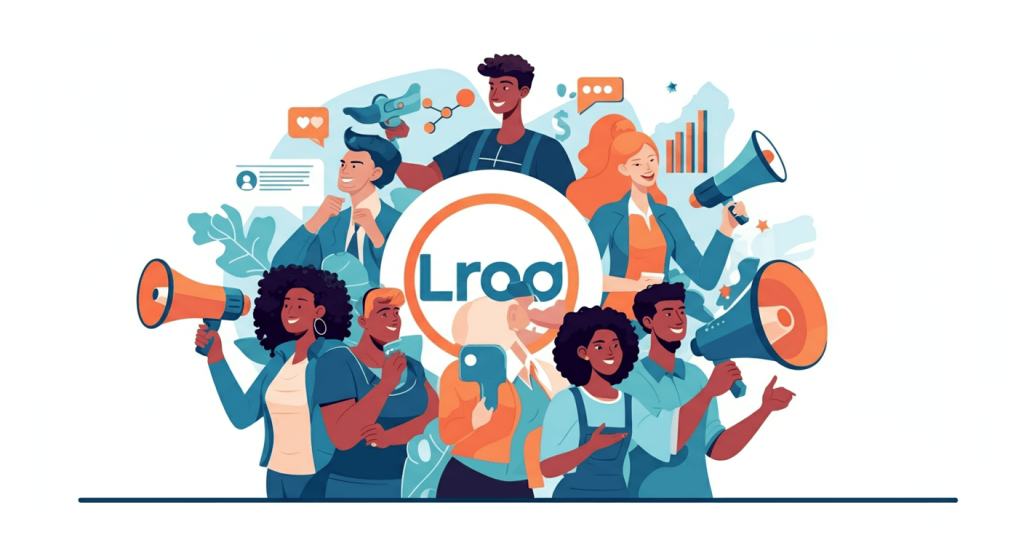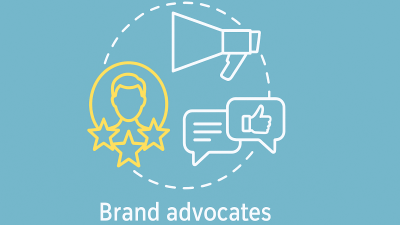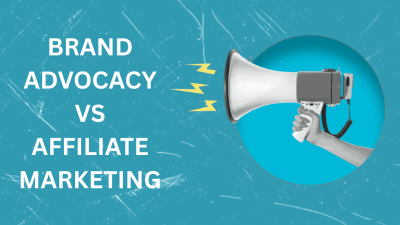Word-of-mouth marketing drives 92% of purchase decisions. This statistic reveals why brand advocacy has become essential for business growth. When satisfied customers share genuine experiences about your products, their recommendations carry more weight than any paid advertisement.
Brand advocacy transforms your happiest customers into active promoters who voluntarily share positive experiences with their networks. These advocates create authentic connections that drive customer loyalty and sustainable business growth.
This comprehensive guide covers everything you need to build a successful brand advocacy program. You’ll discover how to identify potential advocates, recruit them effectively, and measure program success. Whether you’re launching your first program or improving an existing one, these strategies will help you harness the power of customer advocacy.
Companies with strong advocacy programs see higher retention rates, lower acquisition costs, and increased lifetime customer value. The most successful brands understand that advocacy isn’t just about promotion—it’s about building genuine relationships with customers who believe in your mission.
What is Brand Advocacy?
Brand advocacy occurs when customers voluntarily promote your brand to others without direct payment. These advocates share positive experiences through social media posts, online reviews, personal recommendations, and word-of-mouth marketing.
The advocacy ecosystem includes different levels of engagement. Some advocates leave positive reviews occasionally. Others create detailed content showcasing your products. The most engaged advocates become vocal champions who defend your brand and actively recruit new customers.
Research on brand advocacy shows that people trust recommendations from friends and family more than any other information source. This trust makes customer advocacy incredibly valuable for businesses seeking authentic growth.
Consumer advocacy has evolved with social media platforms. A single enthusiastic post can reach hundreds of potential customers instantly. This organic reach makes advocacy marketing more powerful than traditional advertising methods.
Brand advocacy differs from paid promotion because it stems from genuine satisfaction. Advocates speak from real experience with your products or services. Their authentic voices resonate with audiences who are tired of obvious marketing messages.
Understanding the Advocacy Landscape

Brand Advocates vs Influencers vs Brand Ambassadors
Understanding these distinctions helps you choose the right advocacy approach for your business goals.
Brand Advocates are existing customers who promote your brand voluntarily. They receive no payment for endorsements. Their motivation comes from genuine satisfaction with your products. Advocates typically have smaller audiences but generate high engagement within their networks.
Influencers are content creators with established audiences who partner with brands for compensation. They may lack personal experience with your products before promotion. Influencer brand advocacy focuses on reaching new demographics through paid partnerships.
Brand Ambassadors combine elements of both groups. They’re loyal customers who receive formal recognition, exclusive benefits, or modest compensation. Ambassadors maintain ongoing relationships with brands and provide consistent promotion over time.
Each group serves different purposes in comprehensive advocacy strategies. Advocates provide authentic testimonials and drive awareness advocacy among trusted networks. Influencers help you reach new audiences quickly. Ambassadors offer sustained promotion with personal authenticity.
The Cycle of Advocacy
The advocacy journey follows predictable stages that smart brands can nurture and accelerate.
Awareness begins when customers first discover your brand through various channels. Early positive experiences set the foundation for potential advocacy.
Engagement develops as customers interact with your products, content, and community. Meaningful engagement increases emotional connection to your brand.
Satisfaction emerges when products meet or exceed customer expectations. Satisfied customers become candidates for advocacy programs.
Loyalty deepens through consistent positive experiences and brand interactions. Loyal customers are most likely to become active advocates.
Advocacy occurs when loyal customers begin sharing recommendations voluntarily. This stage marks the beginning of their advocacy influence and power.
Amplification happens when advocates recruit new customers who also become advocates. This creates sustainable growth through authentic word-of-mouth marketing.
Benefits of a Strong Brand Advocacy Program

Well-designed advocacy programs deliver measurable benefits that compound over time.
Enhanced Customer Loyalty
Advocates develop stronger emotional connections to brands they promote. This increased loyalty leads to higher retention rates and improved customer lifetime value. Advocates typically purchase more frequently and resist competitive offers.
Cost-Effective Marketing
Advocacy marketing costs less than traditional advertising while delivering superior results. Once established, advocates promote your brand voluntarily. This organic promotion reduces your overall marketing expenses while increasing effectiveness.
Improved Trust and Credibility
Potential customers trust peer recommendations more than brand messaging. Authentic advocacy builds credibility that translates into higher conversion rates and shorter sales cycles. Trust from advocacy extends your brand’s reputation naturally.
Increased Brand Awareness
Each advocate introduces your brand to their network. This expansion happens organically without additional advertising spend. Social media advocacy amplifies this effect by reaching extended networks through shares and engagement.
Valuable User-Generated Content
Advocates create authentic photos, videos, reviews, and testimonials naturally. This content feels more genuine than branded materials and performs better across marketing channels. User-generated content also provides fresh perspectives on your products.
Better Search Engine Performance
Advocacy activities improve your online presence through increased mentions, backlinks, and positive reviews. These signals boost search engine rankings and online visibility. Enhanced SEO performance drives additional organic traffic to your website.
How to Identify Potential Brand Advocates
Finding the right advocates requires a systematic evaluation of your customer base using multiple criteria.
Analyze Customer Behavior Patterns
Look for customers who demonstrate strong brand affinity through their actions. High-value indicators include repeat purchases, high order values, and long customer relationships. These behaviors suggest satisfaction that could translate into advocacy.
Examine engagement patterns across your digital channels. Customers who regularly interact with your social media content, open emails, and visit your website frequently show a strong brand connection.
Monitor Social Media Activity
Use social listening tools to identify customers already mentioning your brand positively. These organic advocates are ideal candidates for formal programs because they’re already promoting you voluntarily.
Search for branded hashtags, product mentions, and user-generated content featuring your products. Customers who create content naturally often become excellent program participants.
Review Customer Feedback
Analyze feedback from surveys, support interactions, and product reviews. Customers who provide detailed, positive feedback often make passionate advocates. Their willingness to share experiences indicates advocacy potential.
Pay attention to customers who defend your brand in online discussions or respond positively to criticism. These behaviors demonstrate the kind of loyalty that drives effective advocacy.
Assess Network Influence
Evaluate potential advocates’ social media presence and engagement quality. Focus on authentic interactions rather than follower counts alone. Micro-advocates with smaller, engaged audiences often deliver better results than macro-influencers.
Consider different levels of advocacy potential. Some customers prefer private recommendations through personal conversations. Others enjoy public promotion through social media advocacy.
Consider Employee Brand Advocacy
Don’t overlook advocacy opportunities within your organization. Employees who are passionate about your company can become powerful advocates within their professional and personal networks. Employee advocacy often feels more authentic because it comes from insider knowledge.
How to Recruit and Onboard Advocates

Successful recruitment requires a thoughtful advocacy approach that respects existing customer relationships.
Personal Outreach Strategy
Begin with personalized messages to your most enthusiastic customers. Acknowledge their loyalty and explain how their experiences could help others discover your brand. Be specific about what attracted you to them as potential advocates.
Avoid mass recruitment emails that feel impersonal. Instead, craft individual messages that reference specific customer behaviors or interactions. This personal touch increases acceptance rates significantly.
Application and Selection Process
Create a simple application that helps you identify the best candidates. Include questions about their experience with your brand, social media activity, and motivation for participating. Keep the process brief but informative.
Use application responses to segment advocates based on their strengths and preferences. Some may excel at written reviews while others prefer video content or in-person recommendations.
Comprehensive Onboarding
Develop welcome materials that introduce new advocates to your program structure. Provide clear brand guidelines, content suggestions, and contact information for ongoing support. Make the onboarding experience smooth and professional.
Set realistic expectations about participation requirements and program benefits. Clear communication prevents misunderstandings and ensures long-term satisfaction with the program.
Community Building
Foster connections among your advocates through private groups or forums. Community interaction strengthens commitment to your program and creates networking opportunities for participants.
Regular community activities like Q&A sessions, product previews, or virtual meetups maintain engagement and provide ongoing value beyond product benefits.
Tools and Platforms for Managing Advocacy
The right technology stack streamlines program management and enables accurate measurement of advocacy campaigns.
Advocacy Management Platforms
Comprehensive platforms like Influitive, Extole, and Mention Me provide end-to-end advocacy program management. These tools handle recruitment, communication, content sharing, and performance tracking in integrated systems.
Advanced platforms include gamification features that motivate continued participation through points, badges, and leaderboards. Automated workflows reduce manual management time while maintaining personal touches.
Social Media Management Tools
Tools like Hootsuite, Sprout Social, and Buffer help monitor advocate activities across multiple platforms. They provide analytics that measure reach, engagement, and conversion from social media advocacy efforts.
Social listening features identify organic brand mentions and potential new advocates. Automated alerts notify you when advocates create new content or when opportunities arise.
Analytics and Measurement Tools
Google Analytics tracks referral traffic and conversions from advocate activities. UTM parameters and custom tracking links attribute specific results to individual advocates or campaigns.
Specialized advocacy metrics platforms measure program performance through comprehensive dashboards. These tools calculate ROI, track brand advocacy metrics, and identify top-performing advocates.
Communication Platforms
Maintain regular contact with advocates through dedicated communication channels like Slack, Discord, or private social media groups. Consistent communication keeps advocates informed and engaged.
Email marketing platforms with segmentation capabilities allow targeted communication based on advocate preferences, performance, or interests.
How to Reward and Motivate Advocates
Effective motivation strategies maintain long-term advocate engagement and enthusiasm.
Recognition and Status Systems
Implement tiered recognition programs that acknowledge different levels of participation. Create status levels with increasing benefits to encourage continued advocacy and engagement.
Public recognition through social media features, website spotlights, or awards ceremonies satisfies advocates’ desire for acknowledgment. Share success stories that highlight individual contributions to your brand’s growth.
Exclusive Access and Experiences
Provide early access to new products before public launches. This exclusivity makes advocates feel special and gives them unique content to share with their networks.
Create special experiences like behind-the-scenes tours, meet-and-greets with company leadership, or exclusive events. Personal connections strengthen advocate loyalty and provide memorable content opportunities.
Meaningful Rewards
Offer valuable discounts, free products, or special perks that provide real benefits. Consider percentage discounts, free shipping, or product bundles that advocates can also share with friends.
Implement point-based systems where advocates earn rewards through various activities. Points can be redeemed for products, experiences, or charitable donations that align with their values.
Professional Development
For B2B advocates, consider offering networking opportunities, industry insights, or skills training. Professional development adds value beyond product benefits and appeals to career-focused advocates.
Avoiding Over-Incentivization
Balance rewards carefully to maintain authenticity. Over-incentivization can make advocacy feel transactional rather than genuine. Focus on recognition and exclusive experiences over cash payments.
Measuring and Optimizing Advocacy Program ROI

Comprehensive measurement ensures your program delivers value and identifies opportunities for improvement.
Essential Brand Advocacy Metrics
Track the number of active advocates, content creation rates, and engagement levels. These metrics indicate program health and growth trends over time.
Monitor advocacy influence power through reach metrics, engagement rates, and content sharing frequency. Quality engagement matters more than quantity in most advocacy programs.
Financial Performance Indicators
Calculate customer acquisition costs for advocate-referred customers compared to other marketing channels. Lower acquisition costs demonstrate program efficiency and value.
Measure customer lifetime value increases among advocate-referred customers. These customers often show higher loyalty, increased spending, and longer retention periods.
Track direct revenue attribution through referral codes, tracking links, and advocate-specific promotions. This data proves program ROI to stakeholders and guides budget decisions.
Brand Health Metrics
Monitor Net Promoter Score (NPS) changes as your advocacy program grows. Increased scores indicate improved customer satisfaction and expanded advocacy potential.
Conduct brand sentiment analysis through social listening tools to measure overall perception improvements. Positive sentiment increases often correlates with successful advocacy efforts.
Track online review quantities and quality across review platforms. Advocacy programs typically increase both the number and positivity of customer reviews.
Content and Engagement Analysis
Analyze which types of advocate-created content perform best across different platforms. Use these insights to guide content suggestions and training for new advocates.
Measure social media reach and engagement from advocate-generated content. Track mentions, shares, comments, and click-through rates to understand content effectiveness.
Real-World Brand Advocacy Examples
Learning from successful programs provides practical insights for developing your advocacy strategies.
Starbucks: Seasonal Campaign Success
Starbucks has built one of the most recognizable advocacy programs through its loyalty app and seasonal campaigns. Customers eagerly share photos of new drinks and seasonal cups, creating massive social media buzz without prompting.
Their success comes from making advocacy easy and rewarding. Customers naturally want to share their Starbucks experiences, and the brand provides plenty of shareable moments through limited-time offers and Instagram-worthy presentations.
Tesla: Product-Focused Advocacy
Tesla demonstrates the power of product-focused brand advocacy. Tesla owners become passionate advocates who share their experiences, defend the brand online, and refer new customers through enthusiastic word-of-mouth marketing.
Tesla’s approach focuses on creating remarkable products that generate natural advocacy. They support this with a formal referral program that rewards advocates with exclusive experiences and recognition.
Glossier: Community-Driven Growth
Glossier leveraged customer advocacy to build a billion-dollar beauty brand. They encourage customers to share makeup looks and product photos, turning everyday users into brand ambassadors through social media advocacy.
Their strategy emphasizes authentic user-generated content over polished brand photography. This approach creates relatability and trust that drives significant business growth.
Peloton: Lifestyle Advocacy
Peloton created a community-driven advocacy program where users share workout achievements and motivate each other. This advocacy ecosystem extends beyond product promotion to lifestyle inspiration and community support.
Their success demonstrates how advocacy can build around shared values and lifestyle aspirations, not just product features. The community aspect strengthens advocate loyalty and program sustainability.
Common Mistakes to Avoid
Learning from typical pitfalls helps ensure your advocacy program succeeds from the start.
Focusing on Vanity Metrics
Many programs prioritize follower counts over genuine engagement quality. Micro-advocates with smaller, engaged audiences often deliver better results than macro-influencers with passive followers.
Focus on authentic engagement, conversion rates, and long-term relationship quality rather than surface-level metrics that don’t drive business results.
Neglecting Ongoing Relationships
Recruitment is just the beginning of successful advocacy relationships. Programs fail when brands stop communicating with advocates after initial onboarding.
Maintain regular contact through newsletters, exclusive content, and personal check-ins. Strong relationships require ongoing investment and attention.
Over-Controlling Content
Excessive control over advocate content reduces the authenticity that makes advocacy effective. While brand guidelines are important, allow advocates creative freedom to share their genuine experiences.
Trust your advocates to represent your brand appropriately. Their authentic voices are more valuable than perfectly controlled messaging.
Inadequate Support Systems
Advocates need ongoing support, resources, and answers to their questions. Lack of support leads to frustration and reduced participation over time.
Provide clear contact channels, comprehensive resources, and responsive support to maintain advocate satisfaction and program effectiveness.
Ignoring Employee Advocacy
Many programs overlook the potential of employee brand advocacy. Your team members know your brand intimately and can provide authentic insider perspectives that resonate with audiences.
Develop separate employee advocacy initiatives that leverage their unique position and expertise within your organization.
Unrealistic Expectations
Advocacy programs require time to build momentum and show significant results. Expecting immediate ROI leads to premature program abandonment before benefits materialize.
Set realistic timelines and incremental goals that allow your program to develop naturally while demonstrating progress to stakeholders.
The Future of Brand Advocacy
Understanding emerging trends helps you build programs that remain effective as consumer behaviors evolve.
Increased Authenticity Demands
Consumers continue demanding more authentic brand interactions. This trend favors genuine advocacy over influencer partnerships that feel commercial or forced.
Programs that prioritize authentic relationships and real customer experiences will outperform those focused primarily on reach or impressions.
Technology Integration
Artificial intelligence and automation tools will streamline advocacy program management while maintaining personal touches. Smart platforms will identify potential advocates automatically and suggest optimal engagement strategies.
However, technology should enhance rather than replace human relationship building at the core of successful advocacy programs.
Community-Centric Approaches
Future advocacy programs will emphasize community building and peer-to-peer interactions more than brand-to-customer communication. Advocates want to connect with like-minded customers who share their interests and values.
Invest in community platforms and experiences that foster genuine connections among your advocates and customers.
Multi-Channel Integration
Successful programs will integrate advocacy efforts across multiple channels and touchpoints. This includes online platforms, in-store experiences, customer service interactions, and traditional marketing channels.
Consistent advocacy experiences across all channels strengthen program effectiveness and advocate satisfaction.
Building Your Advocacy Success Story
Brand advocacy programs represent one of the most powerful marketing strategies available to modern businesses. When customers become genuine advocates, they create sustainable growth engines that compound over time.
Success requires patience, authentic relationship building, and consistent program management. Start with your most enthusiastic customers, provide real value to advocates, and measure progress regularly to optimize performance.
The investment in building a brand advocacy program pays dividends through increased customer loyalty, reduced marketing costs, and authentic brand growth. Your advocates become partners in your success, creating competitive advantages that are difficult for competitors to replicate.
Begin by identifying potential advocates within your existing customer base today. Reach out personally, create structured programs that provide genuine value, and nurture these relationships consistently. Your most passionate customers are waiting to become your most powerful marketing assets.
Remember that advocacy programs succeed through authentic relationships, not transactional exchanges. Focus on building genuine connections with customers who believe in your brand, and they’ll become the driving force behind your sustainable business growth.





